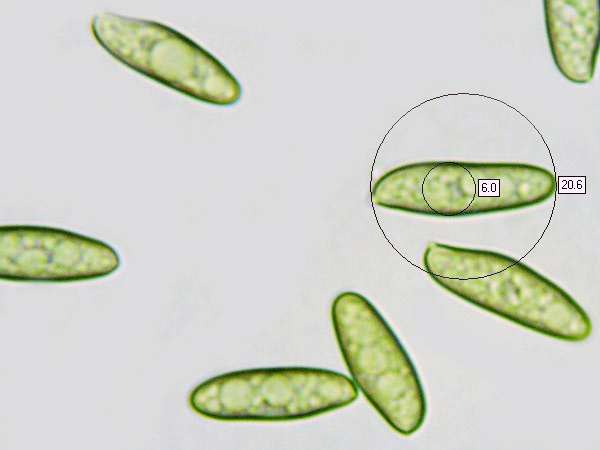Chroogomphus fulmineus (R. Heim) Singer
Phylum: Basidiomycota - Class: Agaricomycetes - Order: Boletales - Family: Gomphidiaceae
Distribution - Taxonomic History - Etymology - Identification - Culinary Notes - Reference Sources
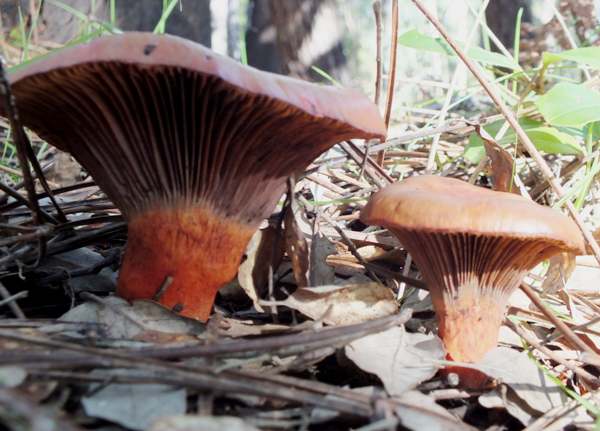
Chroogomphus fulmineus is found beneath pine trees, with which it forms ectomycorrhizae. The orange-brown cap of this attractive fungus is slimy when wet and dries to a bright glossy sheen.
Distribution
Not recorded in Britain and Ireland, Chroogomphus fulmineus is found throughout much of central and southern Europe.
Taxonomic history
First described scientifically in 1934 by French mycologist Roger Jean Heim (1900 - 1979), who gave it the binomial scientific name Gomphidius viscidus var. fulmineus, this woodland mushroom's currently-accepted name Chroogomphus fulmineus dates from a 1988 publication by the French mycologist Regis Courtecuisse.
Synonyms of Chroogomphus fulmineus include Gomphidius viscidus var. fulmineus, Chroogomphus ochraceus (R. Heim) Singer, and Chroogomphus rutilus var. testaceus.
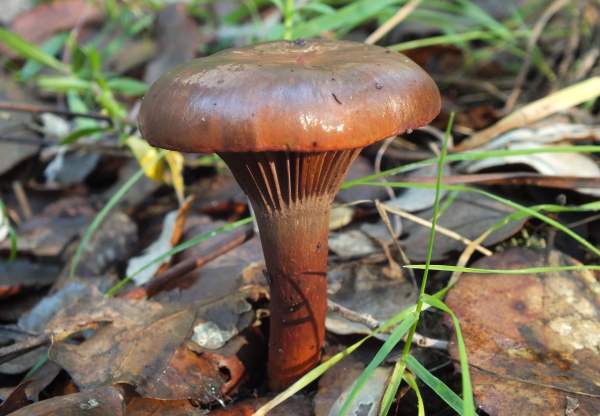
Growing under pines, the specimens pictured above were seen in the Algarve region of southern Portugal. The fine specimen shown below was also under a pine tree, but in deep shade in mixed woodland near Monchique.
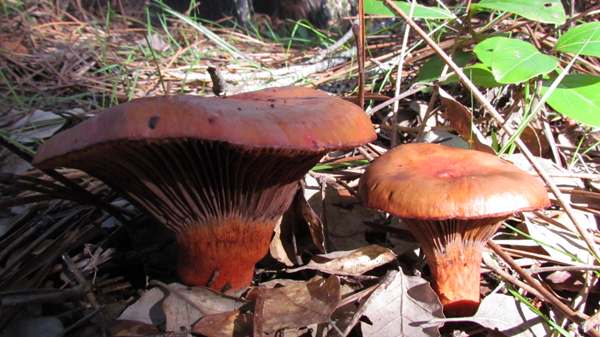
Etymology
Chroogomphus comes from the Greek 'gomphos', a large conical (wedge-like) nail or bolt with a large head, made of either metal or wood and used mainly in ship-building. The prefix "chroo-" means colour(ed). The conical shape of the fruitbodies means that they look very much like those ancient bolts.
The specific epithet fulmineus comes from Latin and means sparkling, splendid or brilliant - particularly appropriate if you come across one of these striking mushrooms in bright sunlight following rain.
Identification guide
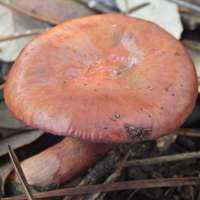 |
Cap4 to 8cm in diameter the orange-red to coppery-red caps of Chroogomphus fulmineus are smooth with fine radial fibrils; the surface is viscous in wet weather. Often the convex caps flatten but retain a downturned or slightly inrolled margin, only occasionally retaining a sharp central umbo or pip. |
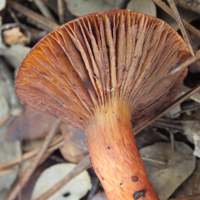 |
GillsUnequal, separated with lamellulae of varying lengths; decurrent; initially the same color as the cap, then turning brown and eventually blackishas the spores mature. Although from its spore characteristics this species is seen to be more closely related to the boletes than to the agaric fungi, it produces its spores via gills rather than pores. |
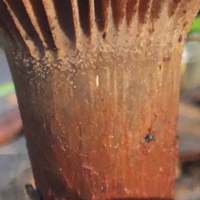 |
StemCylindrical, tapering slightly towards the base, curved 4-8cm tall and 1-1.5cm in diameter; longitudinally fibrilose with a brighter orange ring zone (veil fragments) near the apex. |
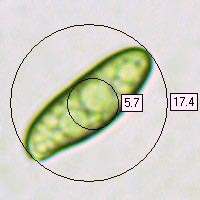 |
SporesThe large bolete-like spores are subfusiform, 15-22 x 5.5-7µm. Spore printVery dark smoky-olive to black. |
Odour/taste |
No significant odour; taste sweet but not distinctive. |
Habitat & Ecological role |
Ectomycorrhizal, in pine woodland, particularly where there are also oaks. |
Season |
Autumn and winter in central and southern Europe. |
Similar species |
Chroogomphus rutilus appears throughout europe; it has a duller coppery brown appearance and a cap which often has a central pip. Gomphidius glutinosus is a much rarer find, occurrs under spruce trees; its cap is grey-violet and its stem is white near the cap and lemon grey towards the base. A glutinous zone at the apex of the stem gradually blackens with age. |
Culinary Notes
This fleshy mushroom is generally reported to be edible, but it lacks flavour and is not highly regarded.
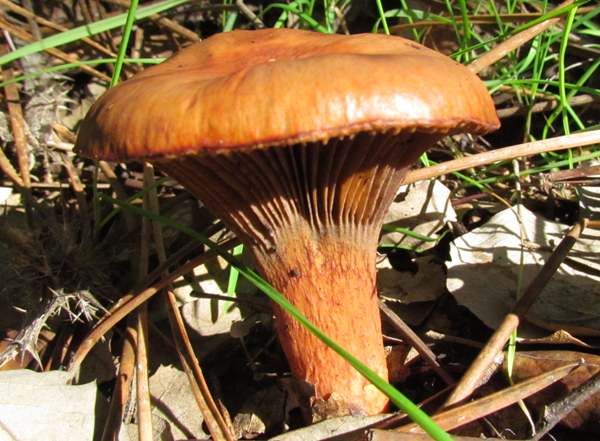
Reference Sources
Fascinated by Fungi, 2nd Edition, Pat O'Reilly 2016, reprinted by Coch-y-bonddu Books in 2022.
BMS List of English Names for Fungi
Dictionary of the Fungi; Paul M. Kirk, Paul F. Cannon, David W. Minter and J. A. Stalpers; CABI, 2008
Taxonomic history and synonym information on these pages is drawn from many sources but in particular from the British Mycological Society's GB Checklist of Fungi.
Fascinated by Fungi. Back by popular demand, Pat O'Reilly's best-selling 450-page hardback book is available now. The latest second edition was republished with a sparkling new cover design in September 2022 by Coch-y-Bonddu Books. Full details and copies are available from the publisher's online bookshop...
